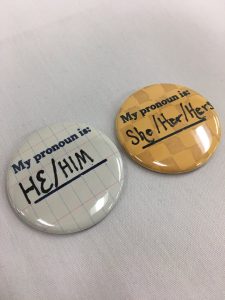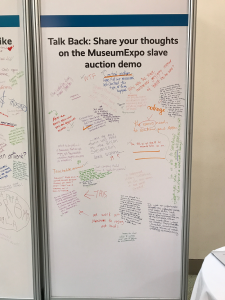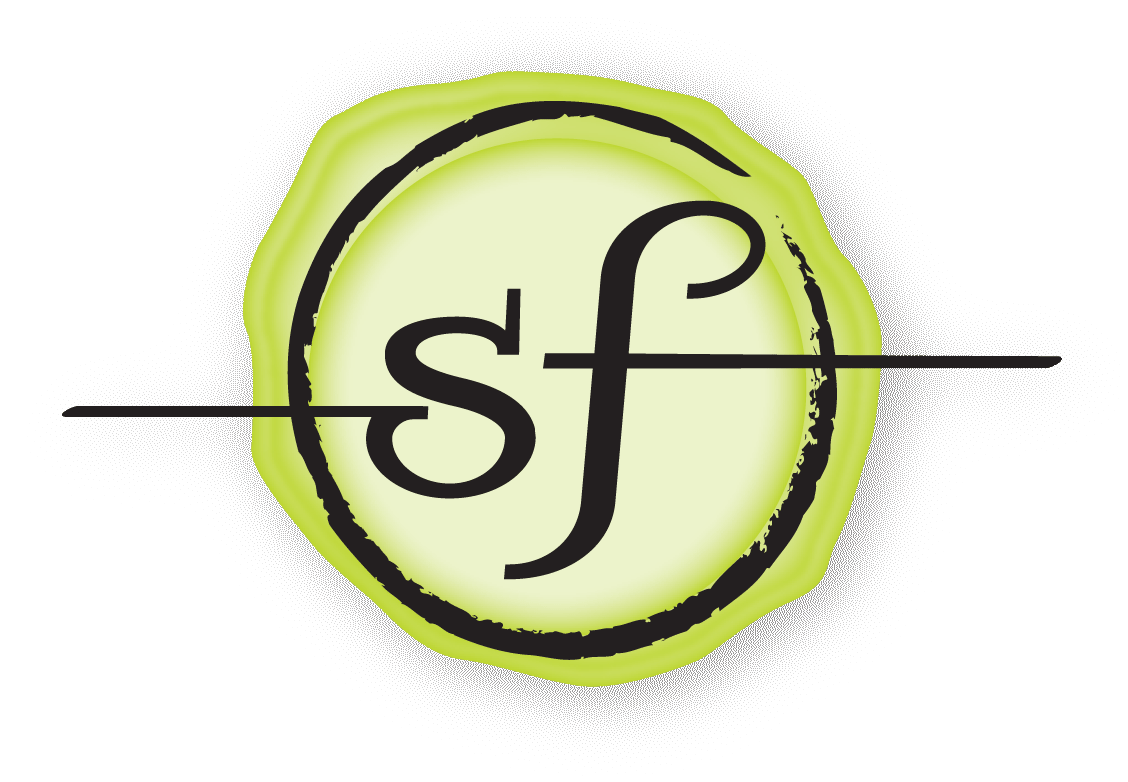
In early May, I attended the annual conference of the American Alliance of Museums (AAM), serving as one of eleven designated social media journalists for the event. The theme of this year’s gathering was “Gateways for Understanding: Diversity, Equity, Accessibility, and Inclusion,” and the social media journalists were specifically tasked with exploring this theme.
Now, I am no stranger to conferences. I’ve been to scores of them over the course of my career, and in my experience, most annual conferences pay only cursory attention to the conference theme. But this conference was different. From the moment attendees arrived, AAM sent a message of inclusion with signs stating the conference’s open policy on bathroom use (i.e., attendees could choose to use whatever bathrooms best expressed their gender identity, no questions asked) and offering attendees the opportunity to make buttons indicating their preferences for personal pronouns.
I’d estimate that at least half of the sessions and all of the keynote events were focused on Diversity, Equity, Accessibility, and Inclusion, exploring the topic from a range of angles including visitor experiences, community outreach, social justice work, hiring and training, leadership practices, and creating a welcoming work environment. My professional work revolves around diversity and inclusion, and yet I still found plenty of new ideas to ponder, debate, and execute.

About halfway through the conference, our explorations of Diversity, Equity, Accessibility, and Inclusion veered beyond the established program when controversy erupted over a vendor display in the Expo hall. A company specializing in creating life-like figures for museum exhibitions had brought a depiction of a slave trader and enslaved person at auction to demonstrate the company’s product. Many attendees found it offensive that such an upsetting event would be displayed in a contemporary marketplace, devoid of historical context. A lively discussion erupted throughout the conference and on Twitter (see #aam2017slaveauction). AAM staff contacted the company about attendees’ concerns and soon added a comment panel related to the slave auction display, soliciting reactions from conference attendees.
On the last morning of the conference, concerned attendees convened at the company’s booth to discuss the issue with the company owner. Dina Bailey, CEO of Mountain Top Vision, LLC, stepped in to facilitate a dialogue, which–from my perspective–created a far richer exchange.
I was happy to see a dialogue about the depiction. Hopefully, all sides gained some understanding and empathy through the process, although–judging from the Twitter feed–many were left dissatisfied with the discussion. For me personally, I felt that this issue provided a real-time example of the hard work ahead if we truly hope to build understanding and create a world that honors Diversity, Equity, Accessibility, and Inclusion in deed as well as word.
For those who want to engage further with these issues:
- Check out the Twitter hashtag #aam2017slaveauction to learn more about various reactions to the display
- Read Seema Rao’s blog post, “Seven Action Steps Post- #AAM2017SlaveAuction #AAM2017“
- Look through the session recordings and handouts from the conference to find materials on various aspects of the conference theme
- Read some of Dina Bailey’s writings, which appear in larger volumes that are also relevant to the topic:
- “The Necessity of Community Involvement: Talking about Slavery in the 21st Century,” (co-written with Richard C. Cooper) in Interpreting Slavery at Museums and Historic Sites, edited by Kristin L. Gallas and James DeWolf Perry (Rowman & Littlefield, 2015)
- “Finding Inspiration Inside: Engaging Empathy to Empower Anyone,” in Fostering Empathy through Museums, edited by Elif M. Gokcigdem (Rowman & Littlefield, 2016)
